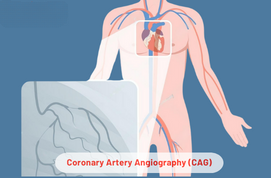An intrathecal baclofen pump is designed to treat spasticity and provide relief in muscle stiffness. It is a medical device which is implanted in patients’ bodies who are suffering with severe or long-term spasticity. The device contains baclofen medication and delivers it to spinal fluid. Baclofen is a type of medicine that aids in relaxing muscles and reducing spasticity in children and adults. When someone’s spasticity is not effectively treated by taking oral medications and physical therapies then intrathecal baclofen pump treatment is suggested by the neurologist to the patients.
Some individuals may experience intolerable side effects from high doses of oral baclofen or other medications used to manage spasticity. Therefore, implanting a baclofen pump allows to deliver lower doses of medication directly to the spinal cord, potentially reducing side effects while maintaining effectiveness. This intrathecal baclofen pump treatment not only reduces muscle stiffness it also uplift the patient’s well-being and support patients to live normal life. Individuals who have severe spasticity due to the brain associated conditions like cerebral palsy, stroke, brain injury, spinal cord injury, etc, are suitable candidates to undergo intrathecal baclofen pump implantation surgery.
What Conditions Does an Intrathecal Baclofen Pump Treat?
A baclofen pump is effective enough to treat various conditions, including:
- Stroke
- Spinal Cord Injury
- Cerebral Palsy
- Traumatic Injury in Brain
- Multiple Sclerosis
- Other neurological conditions
Intrathecal Baclofen Pump Benefits
The following are the advantages of intrathecal baclofen pump implantation:
- Provide comfort
- Reduce pain
- Making is easier to change positions
- Provide assistant managing self-care activities
- Relax muscles
- Reduce stiffness
- Continuous medication delivery to the body
Side Effects Associated with Baclofen Pump
Although Baclofen is an effective way to treat spasticity, it pose some side effects and complications in rare cases, these include:
Common Side Effects
- Infection
- Bleeding
- Bruises in the surgical site
- Leakage of fluid in spinal part
- Discomfort
Complications
- Pump Failure
- Catheter expulsion
- Baclofen Overdose
- Recurrence of stiffness
- Skin collapse
Intrathecal Baclofen Pump Treatment Procedure
A baclofen pump surgery is performed by a neurosurgeon or a pain management physician to treat spasticity. The following are the surgical steps of the procedure:
- First of all, a doctor thoroughly checks the patient’s condition, previous medical history and current medication details then proceeds for the procedure.
- Once the healthcare provider finds you fit for the surgical procedure then determine and schedule the surgery time.
- On the surgery day, the doctors will initially give you anesthesia to make you relax throughout the procedure.
- After that, he/she will start making incisions on your skin where the doctor will place the pump in your abdomen.
- Then connect a tube which is called a catheter, from the pump to the fluid in your spinal column. A small incision in your lower back is also required to push the end of the catheter inside your spine. Once this procedure is done the doctor fills the pump with baclofen medicine.
- Then program the pump using a computer monitor to give a specific dose of baclofen throughout the day.
- The whole procedure can take up to two hours however it depends on the severity of the case.
- Once the procedure is done all incisions are closed and you will be under observation for a few hours to check if the device is effectively working or not.
Our Other Services
Latest Health Tips
Can Immunotherapy Cure Stage 4 Lung Cancer?
Early Signs of Cervical Cancer
Foods that Kill Cancer: Leafy Vegetables, Grains, & More
What Stage of Cancer is Immunotherapy Used For?
Which is Worse for Cancer, Sugar or Alcohol?
Vaccines That Prevent Cancer
What Kills Cancer Cells in the Body Naturally?
5 Early Warning Signs of Bone Cancer
Submit Your Enquiry
Testimonials


























